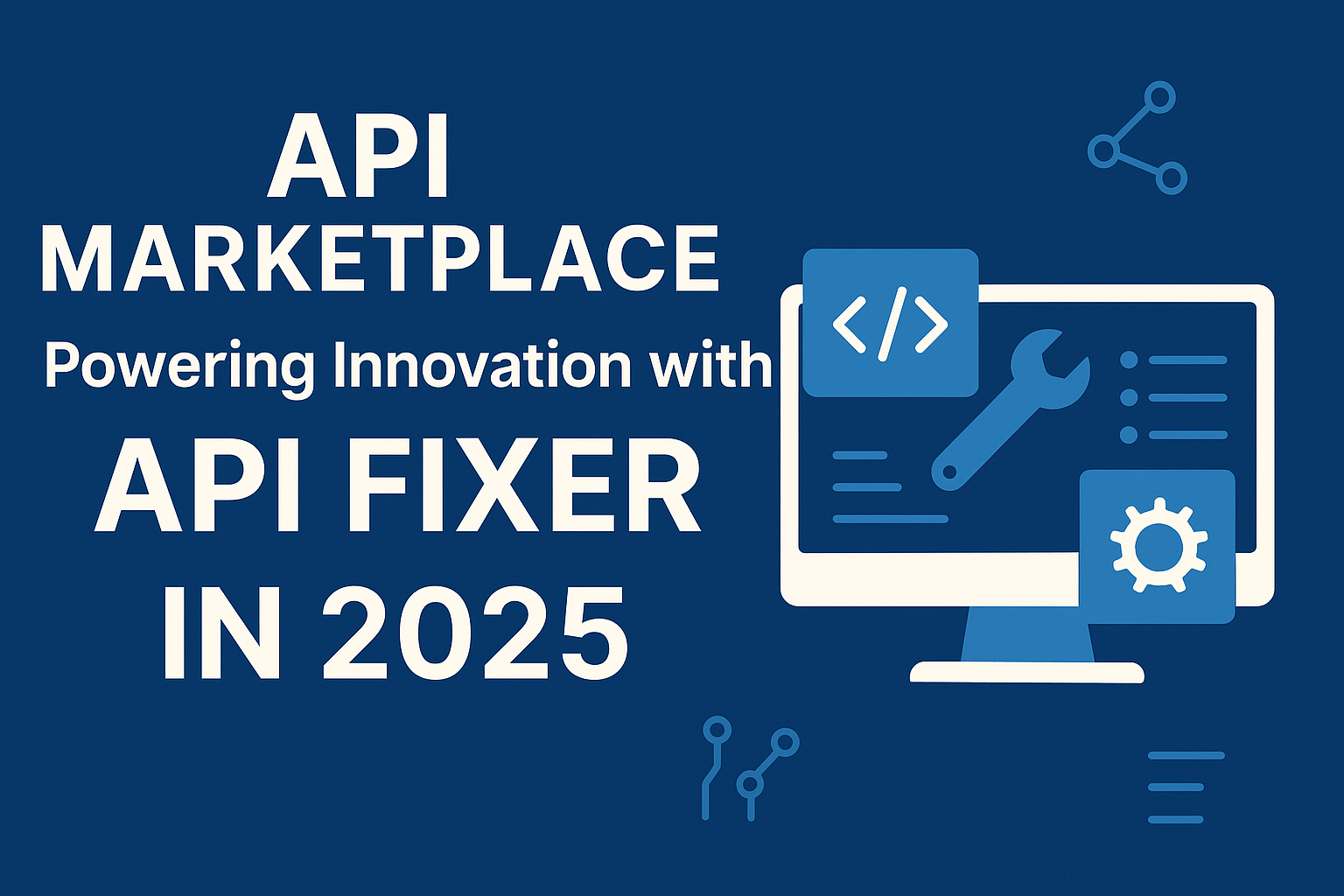Businesses, developers, and startups rely on APIs for payments, geolocation, weather, and especially financial data. Instead of searching the internet for individual APIs, developers now use an API marketplace, a one-stop shop where APIs are listed, categorized, and ready to integrate.
Among the most in-demand APIs are currency data solutions like API Fixer, which provide reliable exchange rates for businesses dealing with international transactions.
What is an API Marketplace?
An API marketplace is an online platform where developers can discover, purchase, and integrate APIs. It’s similar to an app store, but instead of mobile apps, it hosts APIs across categories like finance, travel, AI, and weather.
Marketplaces provide transparency with pricing, ratings, and usage statistics, making it easier for developers to select the right API for their project.
Why API Marketplaces Matter for Developers
For developers, speed and reliability are everything. API marketplaces allow them to:
- Quickly find APIs by category.
- Compare features and pricing.
- Access documentation and SDKs instantly.
- Reduce time spent on manual research.
This streamlines development cycles and ensures projects launch faster.
Key Benefits of Using an API Marketplace
Centralized Access to APIs
Instead of searching multiple providers, marketplaces give developers access to hundreds of APIs in one place.
Faster Development Cycles
APIs can be tested directly from the marketplace before integration, saving time.
Cost-Effective Integration
Transparent pricing ensures developers choose APIs within their budget.
Improved API Security and Governance
Marketplaces often enforce strict security standards, reducing risks.
How API Fixer Adds Value in the Marketplace
API Fixer.io, a leading currency exchange API, is one of the most popular listings on multiple API marketplaces. It provides developers with:
Simplified Currency Data Integration
Supports real-time and historical exchange rates with JSON responses.
Developer-Friendly Documentation
Comes with clear instructions and code snippets for quick integration.
Scalable Plans for All Businesses
From free tiers to enterprise solutions, API Fixer meets diverse needs.
How Does an API Marketplace Work?
- Providers list their APIs with descriptions, endpoints, and pricing.
- Developers browse, test, and compare APIs.
- Purchases or subscriptions are made directly in the marketplace.
- Integration happens via API keys provided to the developer.
Features of a Reliable API Marketplace
API Discovery and Categorization
Helps developers find APIs by industry, function, or popularity.
Rating and Review Systems
Feedback from users helps identify reliable APIs.
Secure API Key Management
Marketplaces safeguard access credentials to prevent misuse.
Use Cases of API Marketplaces
E-commerce Businesses
Easily integrate payment, shipping, and currency APIs.
Financial Applications
Access currency APIs like Fixer.io for global exchange rates.
Travel and Hospitality
Integrate booking, flight data, and pricing APIs.
SaaS Products
Scale globally by adding APIs for billing, geolocation, or weather.
Comparing Leading API Marketplaces
RapidAPI
One of the largest API marketplaces with thousands of listings.
APILayer Marketplace
Hosts developer-focused APIs such as Fixer.io, Currencylayer, and Weatherstack.
AWS Marketplace
Focused on enterprise-grade APIs and SaaS integrations.
Google Cloud Marketplace
Offers APIs with built-in cloud integration for businesses.
API Fixer: A Case Study in Currency Exchange APIs
Why Businesses Choose Fixer.io
It’s trusted by thousands of companies for accurate, real-time exchange rates.
Integration Example
A travel booking site can fetch real-time exchange rates from Fixer.io to show hotel prices in local currencies.
Real-World Applications
Used by e-commerce, financial apps, and SaaS platforms globally.
Step-by-Step Guide to Using API Fixer from a Marketplace
Create an Account
Sign up on the marketplace hosting Fixer.io.
Get Your API Key
Generate a secure token for authentication.
Make Your First Request
Use endpoints like:
Monitor Usage and Scale
Track requests, manage billing, and upgrade plans as needed.
Pricing Models in API Marketplaces
- Free Tier: Limited requests for testing.
- Pay-as-You-Go: Pay only for what you use.
- Tiered Plans: Subscription packages with higher limits.
- Enterprise Plans: Custom features with SLAs.
Challenges in Using an API Marketplace
- Overlapping APIs can confuse new developers.
- Vendor lock-in if relying heavily on one provider.
- Downtime risks if the marketplace has outages.
Best Practices for Developers
- Always check API uptime guarantees.
- Read user reviews before choosing.
- Keep backup providers for critical use cases.
- Test APIs in sandbox mode before deployment.
The Future of API Marketplaces
- AI-driven recommendations for finding the right API.
- More niche marketplaces focusing on finance, healthcare, or logistics.
- Integration with low-code platforms for faster deployment.
FAQs
1. What is an API marketplace?
An API marketplace is a platform where developers can discover, buy, and integrate APIs.
2. Is API Fixer available in API marketplaces?
Yes, Fixer.io is listed on multiple marketplaces, including APILayer.
3. Why should developers use API marketplaces?
They save time, reduce costs, and provide trusted APIs with built-in documentation.
4. Is API Fixer free to use?
Yes, it offers a free tier with limited requests, alongside paid plans for scaling.
5. Can I integrate multiple APIs from a marketplace into one app?
Yes, developers often combine multiple APIs like currency, weather, and payments.
6. Are marketplace APIs secure?
Yes, reputable marketplaces enforce HTTPS, API key authentication, and security standards.
The API marketplace has revolutionized how developers access and integrate APIs. Instead of searching individually, they now explore curated platforms offering secure, affordable, and reliable APIs. Among them, API Fixer stands out as a trusted solution for currency data, helping businesses handle global transactions effortlessly.
As marketplaces grow, developers can expect even more powerful APIs, faster integrations, and scalable solutions to drive innovation in 2025 and beyond.
